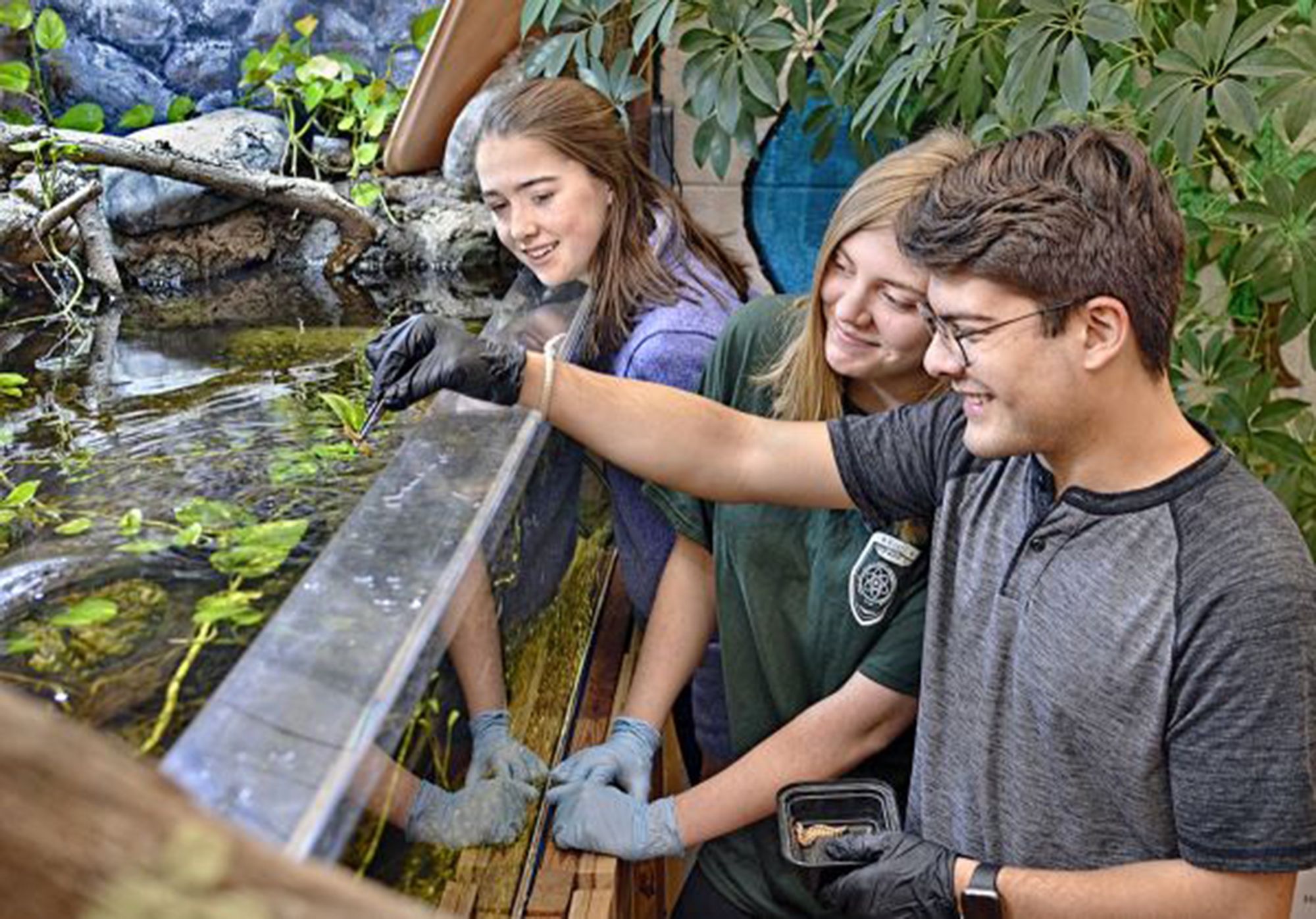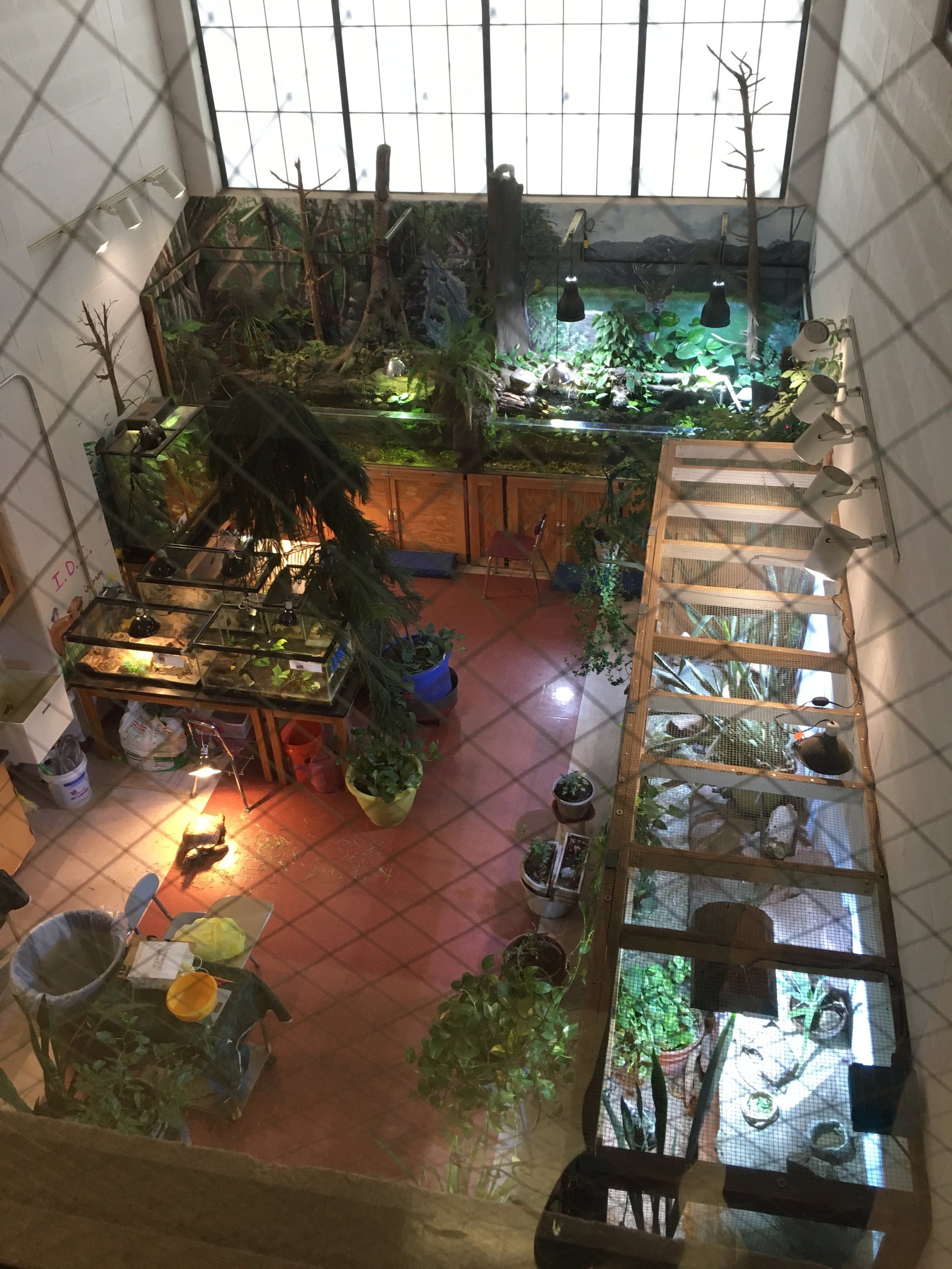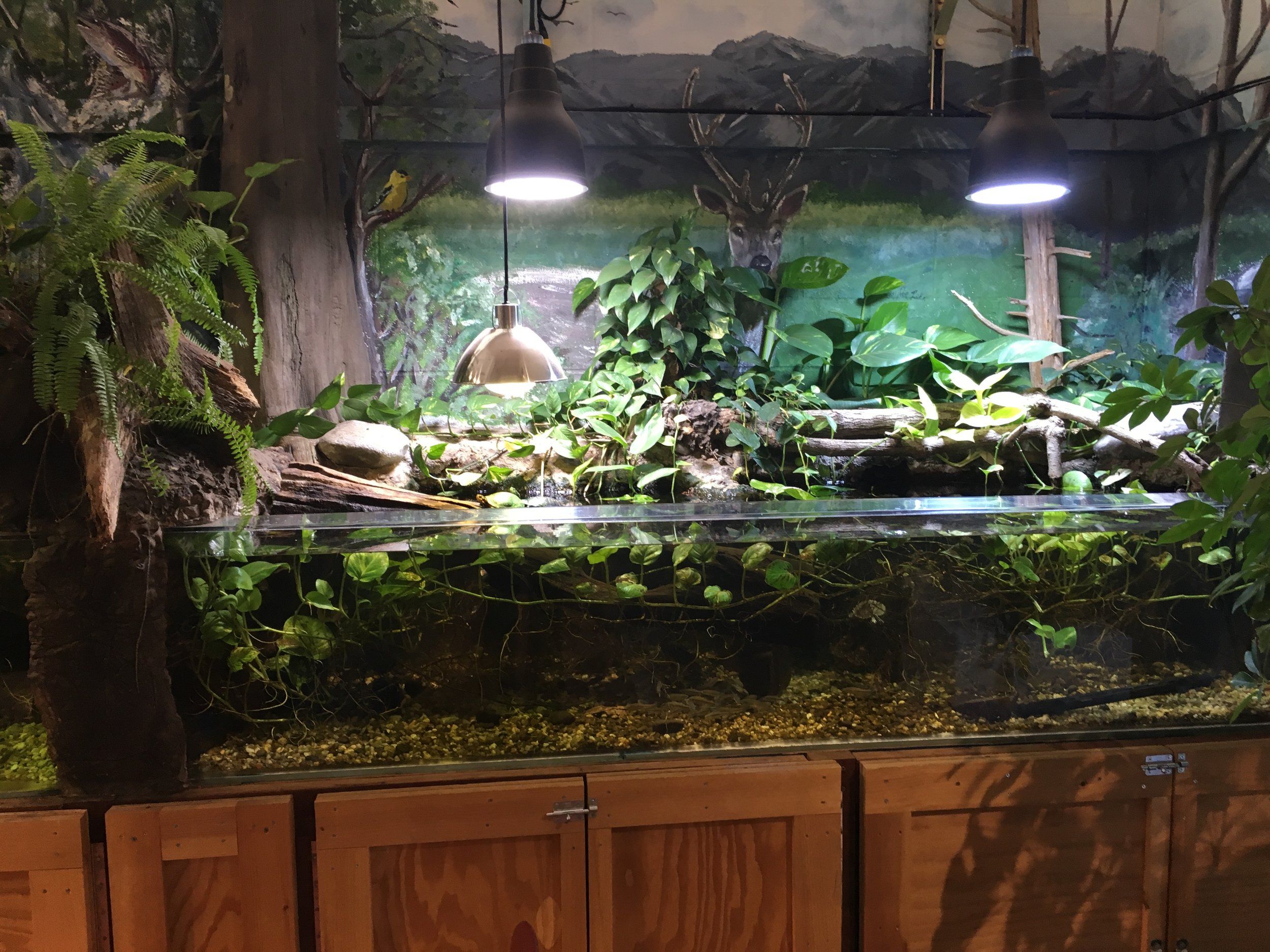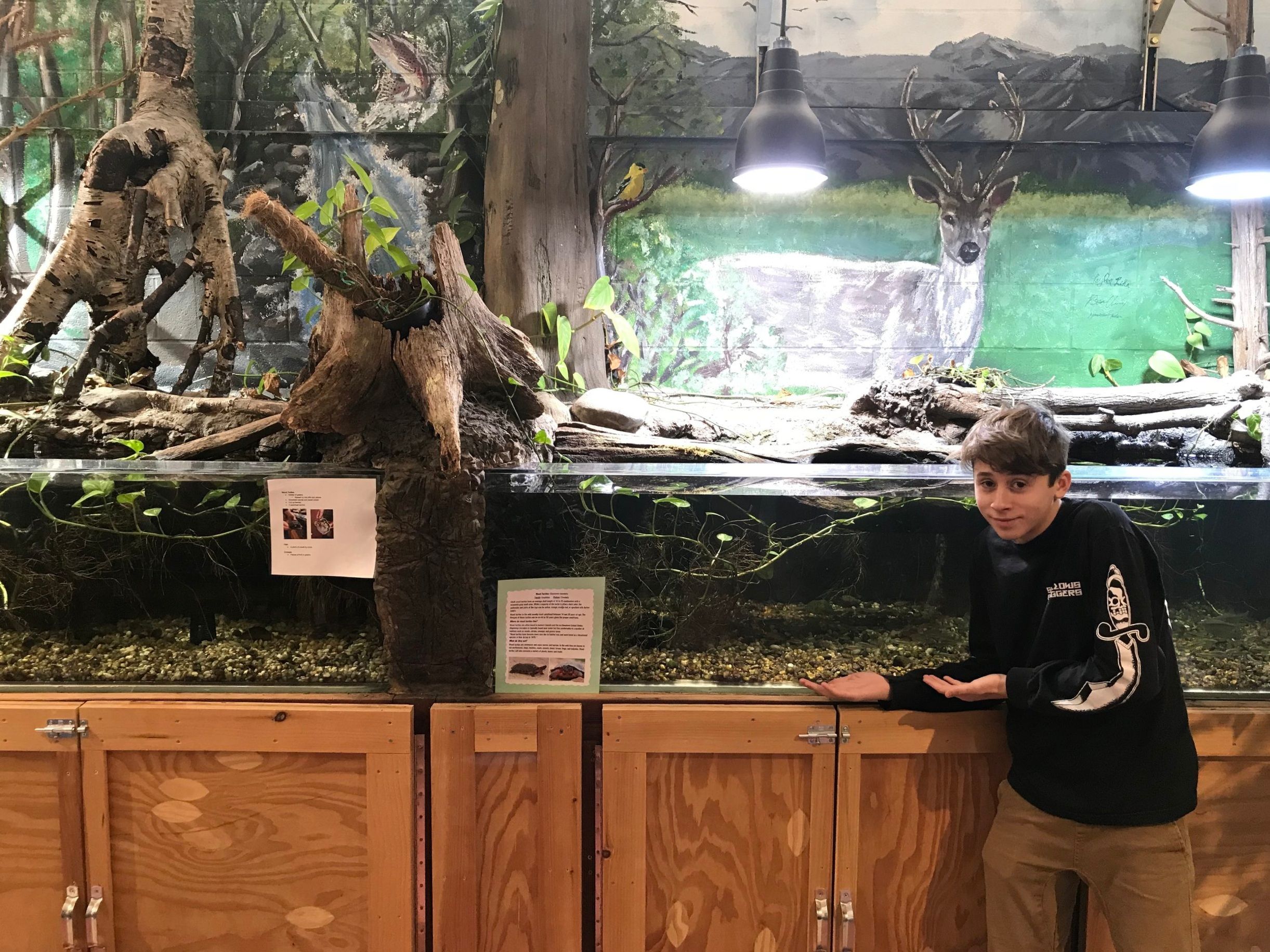Turtle rehabilitation at MOHS Habitat

Feeding the animals in the MOHS habitat room are Kathleen Wooster, Jessica Palmisano, and David Vega.
Volunteering in the greenhouse habitat, several Mount Olive High School students care for the animals, learn skills in the field of biology and ecology, and participate in a rehabilitation program for the animals. The students are currently helping rehabilitate several turtles for the Turtle Conservancy, an organization that helps protect over 300 species of endangered turtles throughout the world. These turtles will be returned to the care of Maurice Rodrigues in May, one of the founders of the program.
Ms. Stephanie Makala, who oversees the care of the habitat, said, "Students learn about the importance and value of conservation through working directly with these animals that are native to NJ. They have a great sense of responsibility for their care and recovery. They also feel a sense of accomplishment when they see the turtles learning to behave as wild turtles should and improving physically each day through their direct efforts."
Several of the MOHS biology classes utilize the habitat room for ecology and phylogeny lessons, and the biggest tank in the habitat holds 450 gallons of water. Ms. Makala said, "This is our third year of working with the turtles, but it is the first year that students have been involved in helping turtles physically recover from captivity or injuries. Tangy [pictured below], one of the wood turtles with the injured leg, is doing better and is now eating in the big water tank during her physical therapy sessions!"
Kathleen Wooster, one of the student volunteers, enjoys watching the turtles get stronger through their rehabilitation and seeing their personalities shine through. Getting to work in the habitat has given Wooster some more experience in the field of biology as she prepares for a probable career in science. Wooster said, "I absolutely love science, and I think that whatever field I choose to go into, it will definitely include science."
Another student volunteer, Jessica Palmisano, echoes many of Wooster's sentiments. Palmisano, who wants to pursue a career in the field of chemistry, said, "From working in the habitat room I've learned a lot about responsibility. I take time out each week, whenever I can, to work with the animals. It's important that I'm focused on them and patient so they are well taken care of."

Julia Papafio loves volunteering in the habitat because of its calm atmosphere. She also explained how volunteering there has taught her a lot about commitment: "You can't just bail out on your responsibilities when there's others counting on you. I'm very grateful for Jess, David and Kathleen for being committed to the animals. And also to Ms. Makala for giving us the opportunity to be in there."
Senior, David Vega, who initially became involved in the habitat room through IDI Environmental Club, said, "These past months have been full of amazing opportunities, allowing me to work hands on with multiple animals including turtles, tortoises, bearded dragons, frogs and leopard geckos. Working in the habitat room definitely has a calming sense to it. Once I step into the room, I think about nothing else but the animals in front of me. It is truly a rewarding experience."
Vega also described one of the turtles currently being rehabilitated through their habitat, that they've given the name, Tangy. She was initially found with an injured front leg and has been able to rehabilitate in one of the habitat tanks, pushing her way to the surface and swimming around.
Volunteering in the habitat has helped Vega prepare for his future career. "In college," he said, "I plan on majoring in animal science, focusing on a pre-vet track that will hopefully lead me to veterinary school. Given the major and career that I hope to pursue, the habitat room has clearly been a step in the right direction and has given me the necessary experience that will only grow as I follow my aspirations in becoming a veterinarian."





